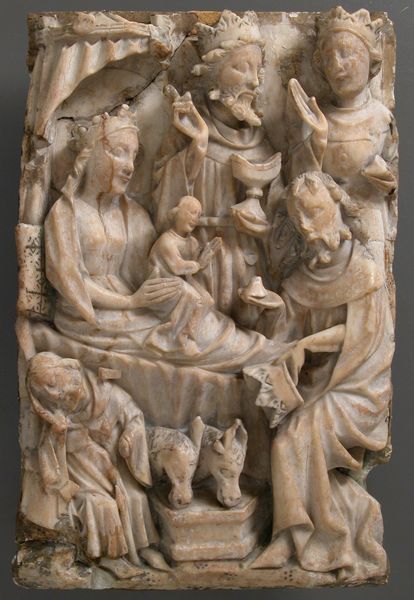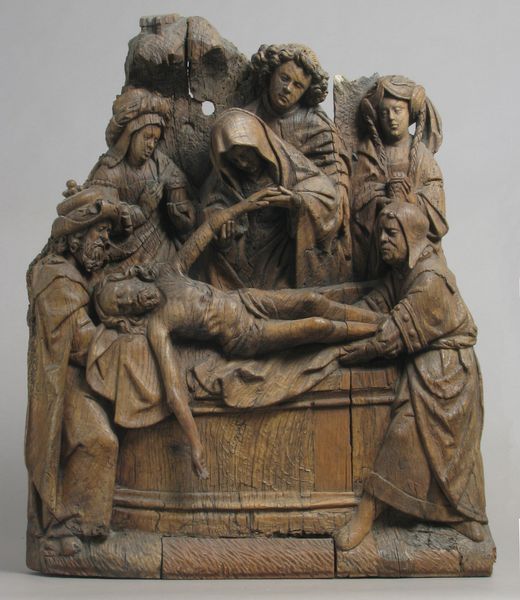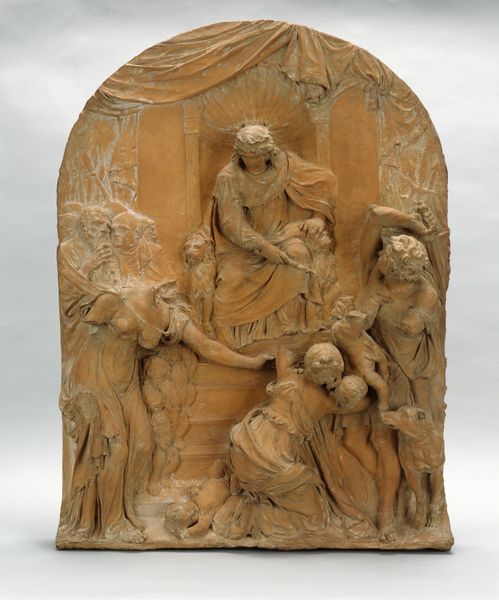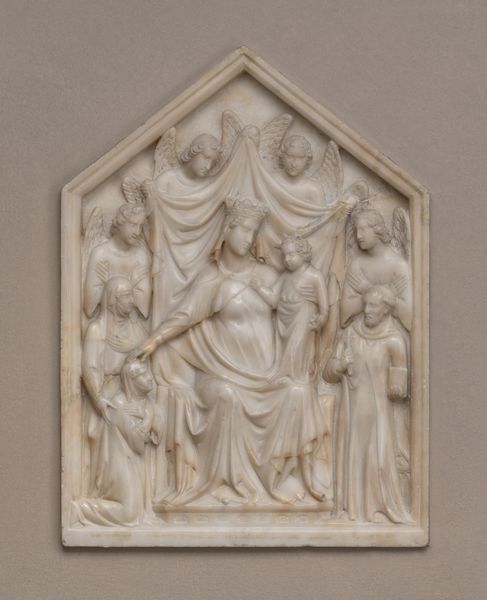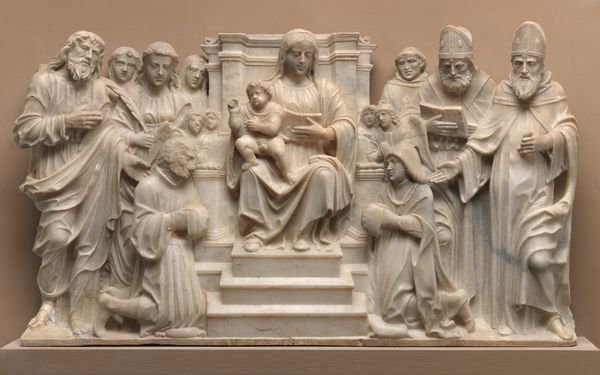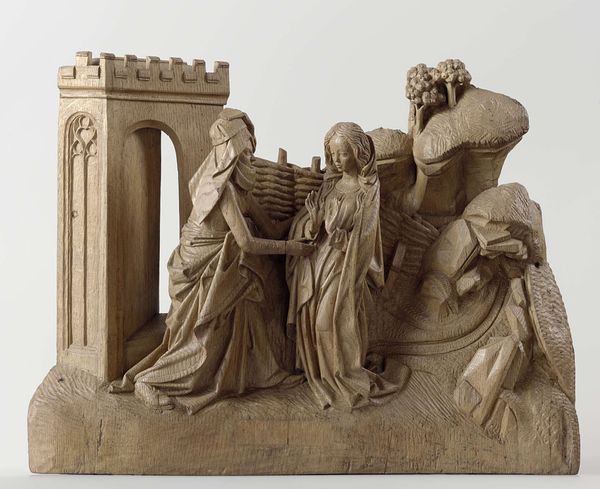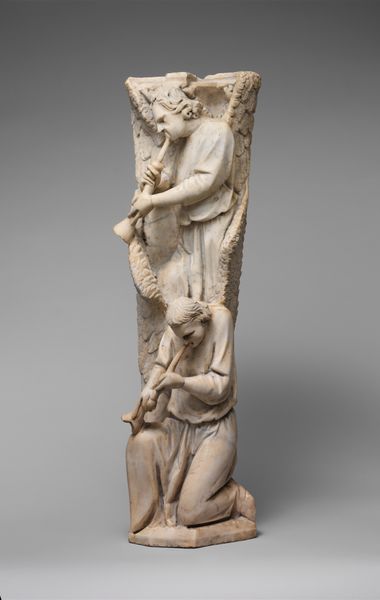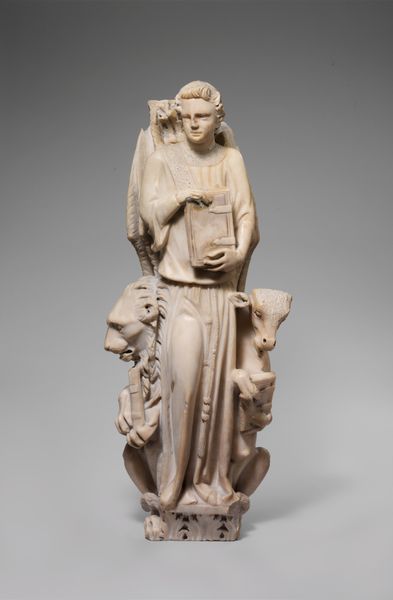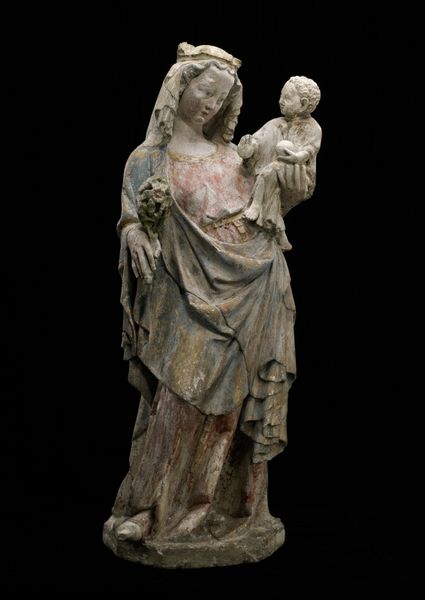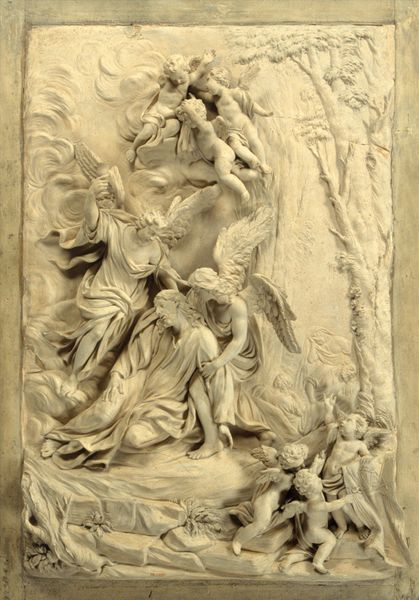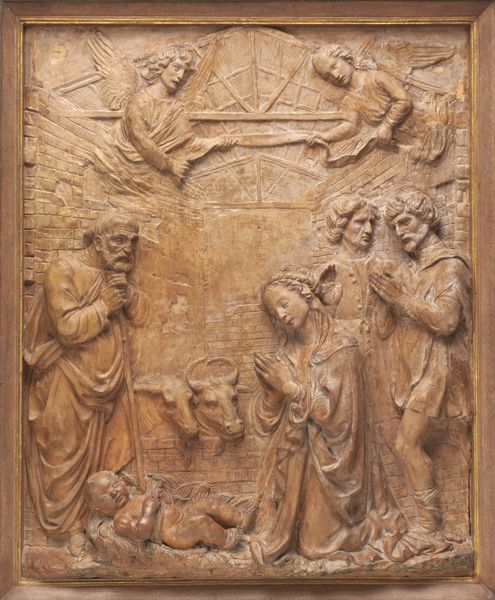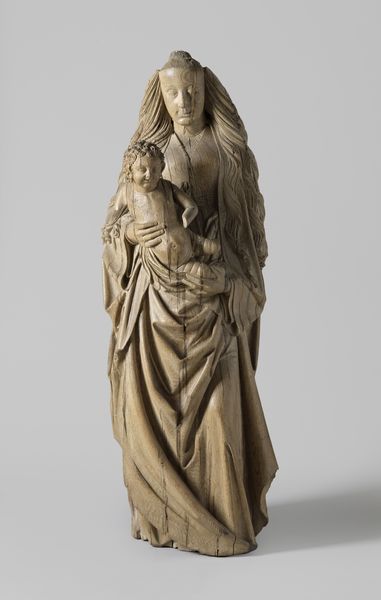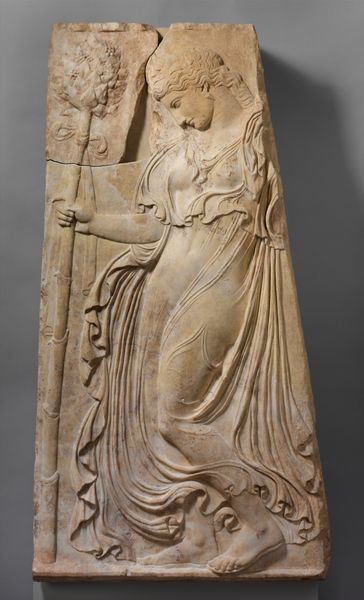
carving, sculpture
#
medieval
#
carving
#
stone
#
sculpture
#
figuration
#
romanesque
#
sculpture
#
history-painting
Dimensions: 60 5/8 x 38 9/16 x 7 7/8 in. (154 x 98 x 20 cm.)
Copyright: Public Domain
Editor: Here we have a Romanesque stone carving of the Crucifixion, dating back to about 1180. I am struck by how vulnerable Christ looks; his ribs are so clearly defined. What do you make of this piece? Curator: This sculpture is a potent example of how the image of the Crucifixion evolved during the medieval period. Consider the choice of stone, its enduring nature connecting the present viewer to centuries past, to the cultural memory of the event. Note the figures accompanying Christ – what emotions do you read in their faces and gestures? Editor: Well, the figure on the left looks mournful, clutching her hands to her chest, maybe a depiction of Mary? The other figure seems to be pleading or explaining something. Curator: Indeed. The Virgin Mary, typically shown in deep sorrow, embodying grief. The other is likely Saint John the Evangelist. His presence offers not just witness but, through his book, a potential path to understanding. Why do you think the artist chose to emphasize Christ’s ribs so dramatically? Editor: It really underscores his suffering. Maybe it's about making his sacrifice feel very real, very human, for the viewer. Curator: Precisely. The emphasis on physical suffering speaks directly to the viewer's empathy and spiritual reflection, drawing upon centuries of tradition. This iconography becomes deeply embedded in the cultural consciousness. Editor: This exploration makes me see how powerfully symbols could convey complex theological concepts, especially for a largely illiterate population. Curator: And how artists, through careful rendering, cemented those symbols into the very fabric of our shared cultural heritage. It leaves us to reflect upon the potency of the Crucifixion's symbol in our time.
Comments
minneapolisinstituteofart about 2 years ago
⋮
Jesus is seen dead on the cross while his mother, Mary, and his favorite disciple, the Evangelist Saint John, mourn below. This large-scale work embodies the characteristics of Romanesque sculpture in the medieval period, with its heavy stylized bodies, calligraphic depiction of hair, and linear, energetic approach to rendering the folds of the fabric. A new interest in monumental stone sculptures, particularly those with an architectural purpose, arose in the 1100's in Europe. This relief would likely have been used as the centerpiece of a tympanum—an arched area above a church entrance that was covered with sculpted decoration. It is not known where the relief comes from, but it bears a resemblance to the sculpture of northern Spain, particularly to works in churches on the still-active pilgrimage route leading to Santiago de Compostela.
Join the conversation
Join millions of artists and users on Artera today and experience the ultimate creative platform.
